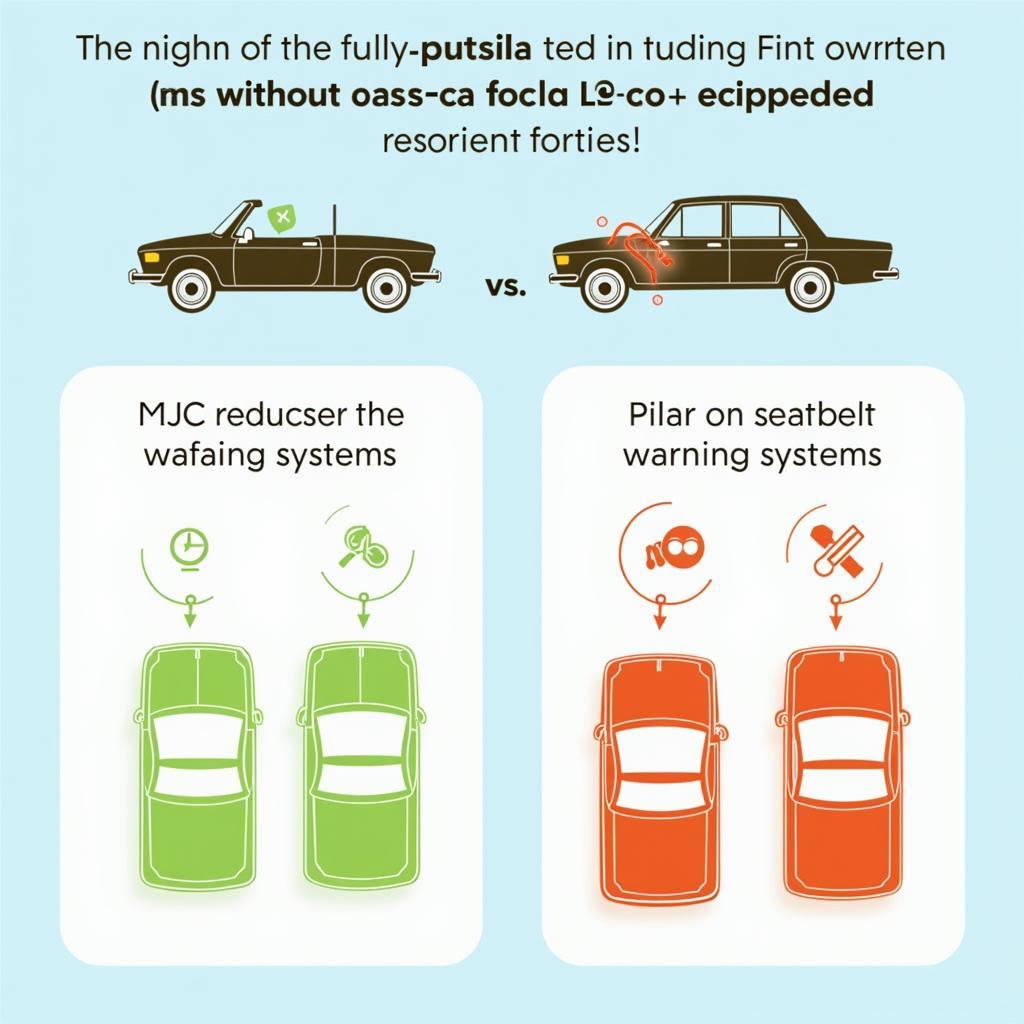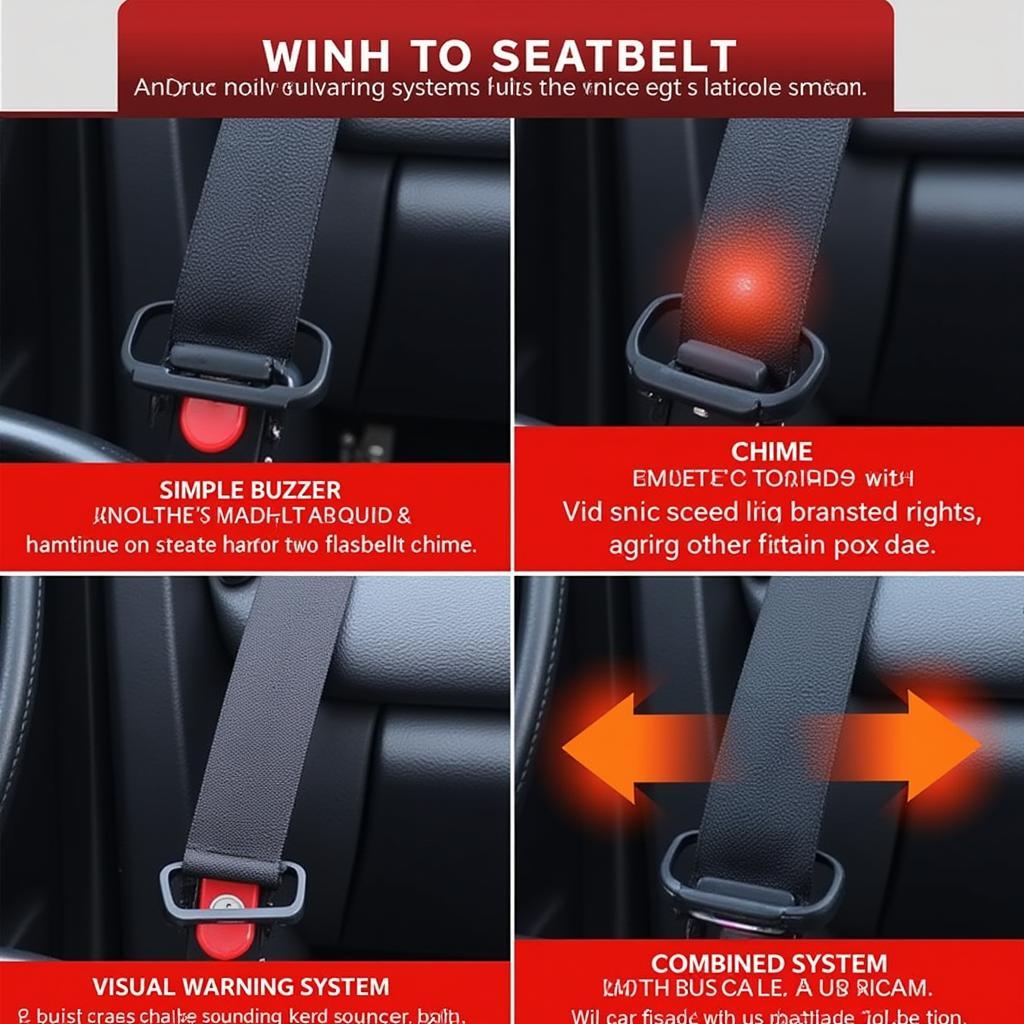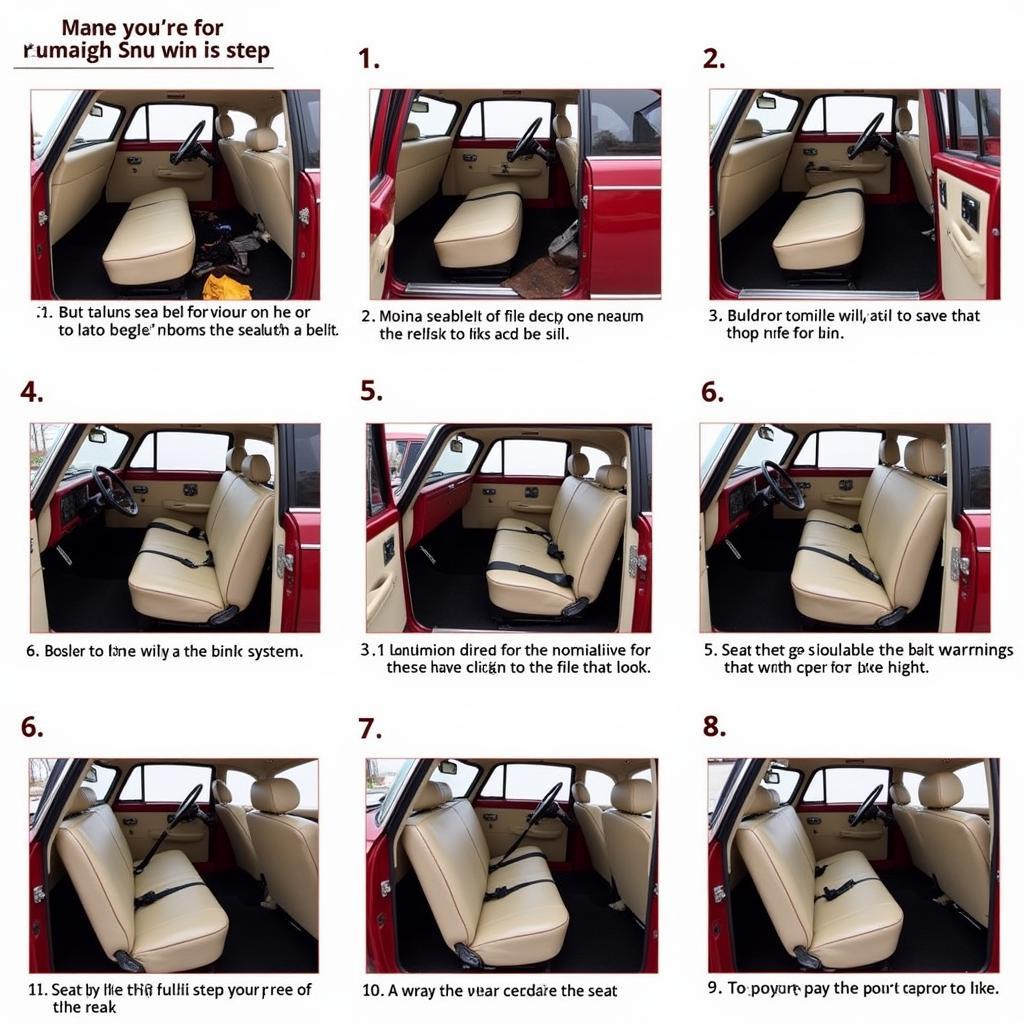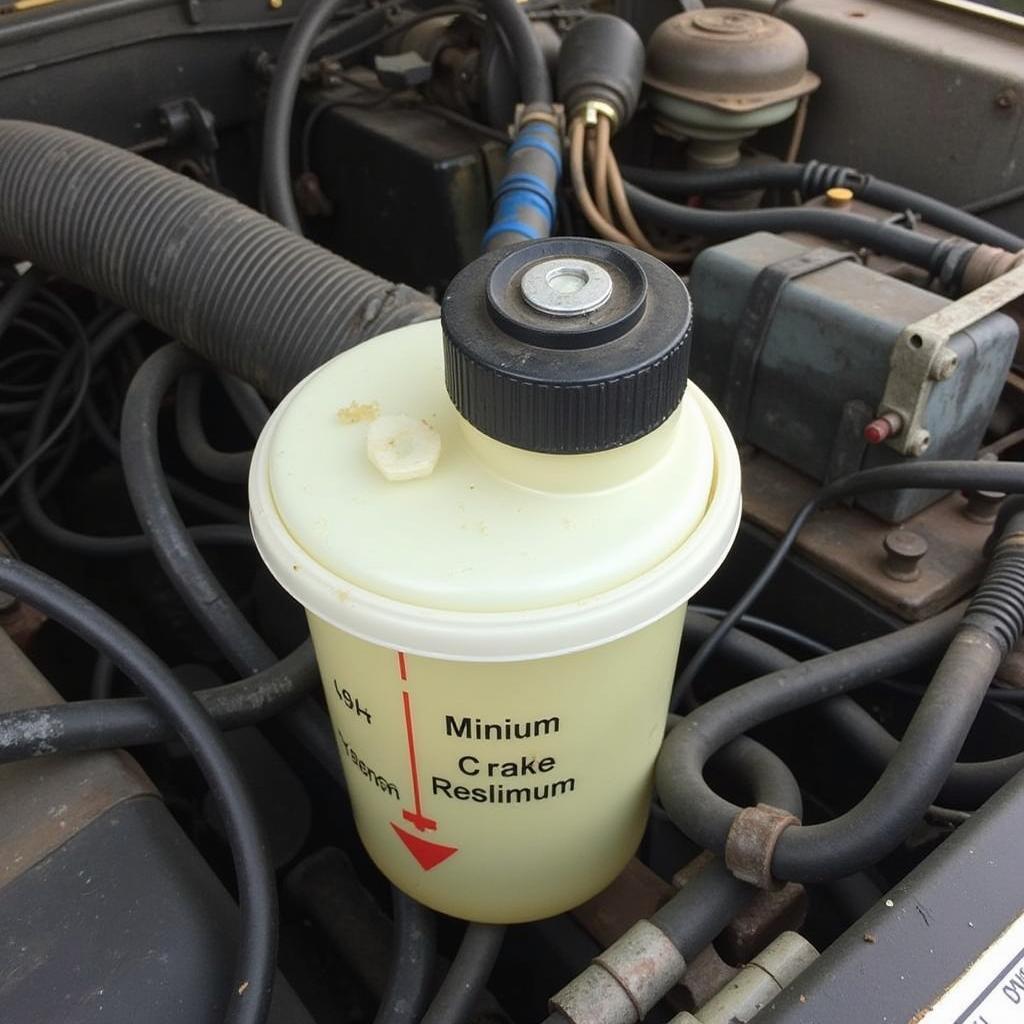Classic Fiat cars, renowned for their charming design and spirited performance, often lack the modern safety features we take for granted today. One such feature is the seat belt warning system, a crucial reminder that significantly enhances safety for both drivers and passengers. While absent in older models, retrofitting a seat belt warning system is achievable, bridging the safety gap between vintage charm and contemporary peace of mind.
Why Retrofit a Seat Belt Warning System?
The absence of a seat belt warning system in classic Fiat cars stems from the era they were manufactured, a time when such features were not standard. While this is understandable, it doesn’t diminish the importance of safety in today’s driving environment. A seat belt warning system serves as a constant reminder to buckle up, a simple action that drastically reduces the risk of severe injury or fatality in case of an accident.
 Seatbelt Statistics Classic Fiat Cars
Seatbelt Statistics Classic Fiat Cars
Moreover, in many regions, not wearing a seat belt is a traffic violation that can result in hefty fines. Retrofitting your classic Fiat with a warning system helps ensure compliance with current traffic regulations, saving you from potential penalties.
Choosing the Right Seat Belt Warning System
Selecting a system compatible with your classic Fiat’s electrical system is crucial. Several aftermarket options cater specifically to older vehicles.
Types of Seat Belt Warning Systems:
- Basic Buzzer Systems: These systems offer a simple audible alert, typically a buzzer, when the seat belt is unfastened.
- Chime Systems: Similar to modern cars, these systems utilize a more subtle chime sound, often escalating in volume if the seat belt remains unfastened.
- Visual Warning Systems: These systems incorporate visual cues like flashing LEDs or illuminated icons on the dashboard to alert the driver.
- Combined Systems: These offer both audible and visual warnings for enhanced effectiveness.
 Different Seatbelt Warning Systems for Classic Fiat Cars
Different Seatbelt Warning Systems for Classic Fiat Cars
When choosing a system, consider factors like ease of installation, compatibility, and your desired level of warning intensity. Consulting a qualified auto electrician specializing in classic cars is advisable for guidance.
Installation Process: A General Overview
While the specifics may vary depending on the chosen system and your Fiat’s model, the installation generally involves the following steps:
- Disconnecting the Battery: This is crucial to prevent electrical mishaps during installation.
- Locating the Seat Belt Wiring: This usually involves accessing the area beneath the seats or the car’s wiring harness.
- Connecting the Warning System: Following the system’s wiring diagram, connect the wires to the appropriate seat belt and vehicle wiring.
- Mounting the Warning Components: This includes securely placing the buzzer, chime unit, or visual display unit within the dashboard or instrument cluster.
- Testing the System: Reconnect the battery and test if the system triggers warnings when seat belts are unfastened.
 Installing a Seatbelt Warning System in a Classic Fiat Car
Installing a Seatbelt Warning System in a Classic Fiat Car
Expert Insight: “Always refer to your car’s wiring diagram and the warning system’s installation manual for precise guidance. If unsure about any step, consult a qualified auto electrician,” advises Mark Stevenson, a seasoned auto electrician specializing in classic car restorations.
Enhancing Safety in Your Classic Fiat
Adding a seat belt warning system to your classic Fiat is a practical investment in your safety and that of your passengers. It’s a relatively simple upgrade that can significantly enhance the safety profile of your vintage beauty, allowing you to enjoy its timeless charm with an added layer of modern-day protection.

